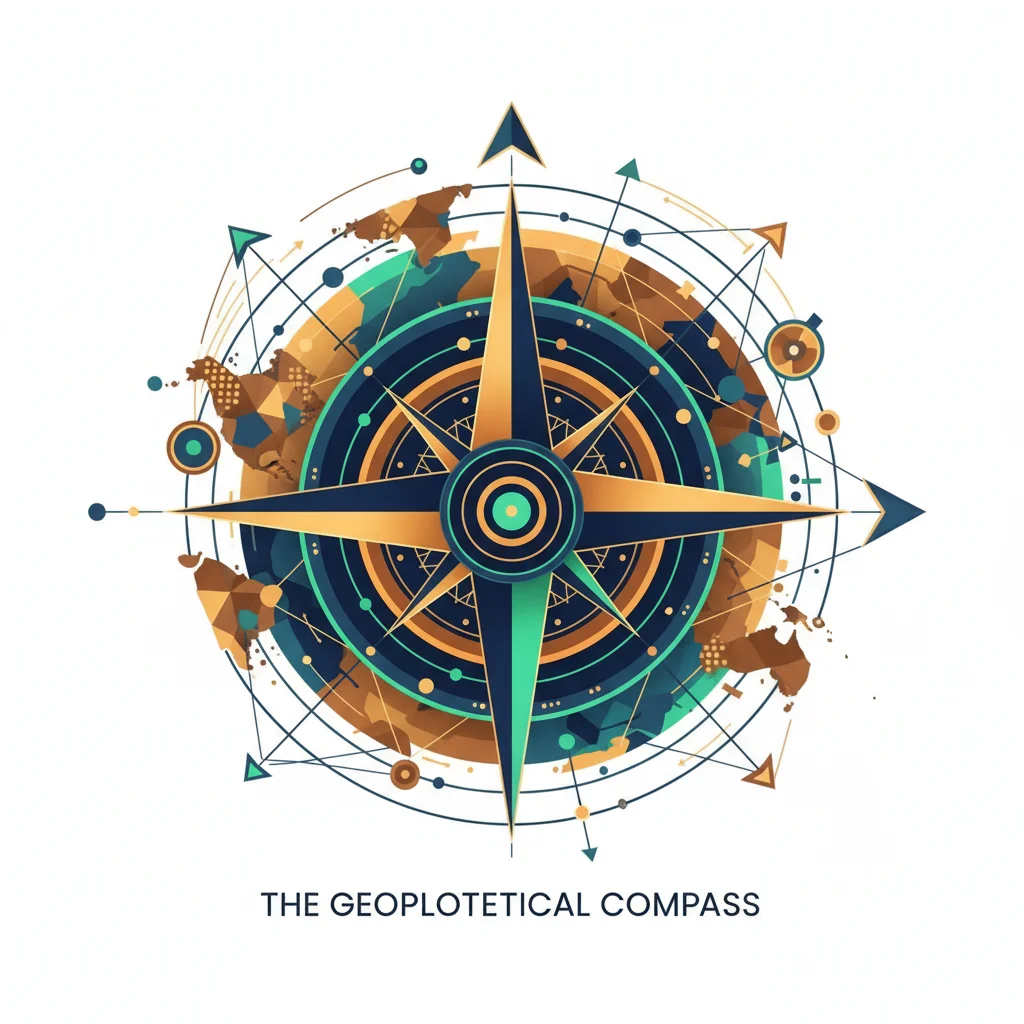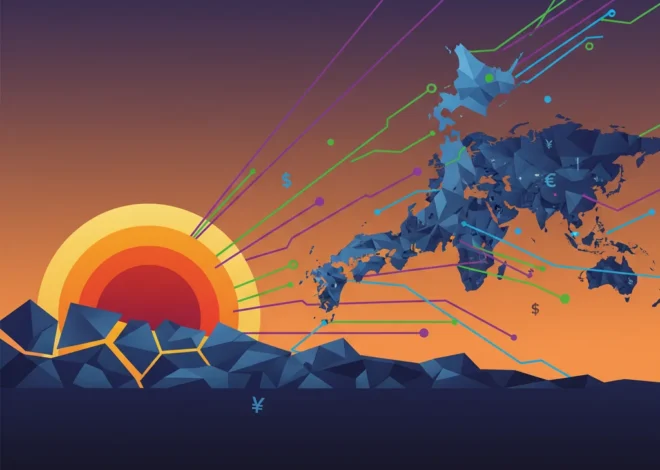
The Geopolitical Compass: Navigating the New Landscape of Global Finance
The Unseen Force: Why Geography is the Most Underrated Factor in Modern Finance
In the world of finance, we are conditioned to think in abstractions—algorithms executing trades in microseconds, capital flowing frictionlessly across digital borders, and stock market valuations driven by earnings reports and investor sentiment. We often picture the global economy as a placeless, digital cloud. But this is a dangerous oversimplification. Beneath the veneer of digital immediacy lies a powerful, unyielding force that has shaped markets for centuries and is reasserting its dominance today: geography.
The physical world—with its borders, shipping lanes, resource deposits, and climate patterns—is not merely a passive backdrop for economic activity. It is an active, and often disruptive, variable in the complex equation of investing, banking, and financial technology. Recognizing this is no longer an academic exercise reserved for students in a geography class; it is an essential competency for any serious investor, finance professional, or business leader. Understanding the “where” is becoming as critical as understanding the “what” and “how much.”
From the concentration of financial power in specific cities to the scramble for critical minerals fueling the green revolution, geography dictates opportunities and defines risks. It explains why a drought in Brazil can roil the coffee futures market in Chicago, how a geopolitical flare-up in the Strait of Hormuz can send shockwaves through the global stock market, and why the future of blockchain innovation may be decided by energy grids in Texas and regulations in Switzerland. This article will explore the critical intersection of geography and finance, revealing how physical location, political boundaries, and natural phenomena are shaping the future of the global economy.
From Port Cities to Power Centers: The Geographic DNA of Finance
The history of finance is inextricably linked to geography. The world’s first and most enduring financial centers did not emerge by accident; they were born of distinct geographical advantages that created a fertile ground for trade, capital accumulation, and innovation.
Consider London. Its rise as a global financial hub was propelled by its strategic location as an island nation with a powerful navy, making it a nexus for global maritime trade. Its unique time zone, which allows it to overlap with trading hours in both Asia and the Americas, remains a significant structural advantage in the 24/7 world of modern finance. Similarly, New York’s magnificent natural harbor made it the gateway to the New World, fueling its growth into the epicenter of American capitalism. Even earlier, the Republic of Venice leveraged its control over Mediterranean trade routes to become the cradle of modern banking and international finance (source).
These historical precedents offer a crucial lesson: financial power coalesces where geography provides an edge in trade, information flow, or security. While technology has changed the nature of that “edge,” the underlying principle remains the same. The concentration of talent, capital, and infrastructure in these locations creates a gravitational pull that is difficult to replicate, cementing their status in the global financial system.
The New Treasure Map: Natural Resources and the Geopolitics of Investing
In the 21st century, the link between natural resources and economic power is more pronounced than ever. The global transition to a sustainable economy and the insatiable demand for technology have created a new “treasure map” for investors, where geological deposits dictate the fortunes of nations and corporations.
The most obvious example is the energy sector. Control over oil and gas reserves has long been a cornerstone of geopolitical power, influencing everything from currency values to military alliances. An investor in the energy stock market who ignores the political stability of the Middle East or the production capacity of US shale fields is flying blind. However, the map is being redrawn. The shift to renewable energy has triggered a global race for critical minerals like lithium, cobalt, and rare earth elements—the building blocks of batteries, electric vehicles, and wind turbines.
This creates a new geography of influence. Nations like Chile and Australia (lithium), the Democratic Republic of Congo (cobalt), and China (rare earths) have become pivotal players in the new economy. For investors, this presents both immense opportunities and significant risks. A portfolio exposed to the green energy transition must also be hedged against the geopolitical risks inherent in these highly concentrated supply chains. As a recent analysis showed, disruptions in the supply of these minerals could have a cascading effect on the global economy with far-reaching consequences.
The table below illustrates how specific geographic resource concentrations translate into direct financial and investment implications.
| Geographic Region | Key Resource | Financial & Investment Implications |
|---|---|---|
| Middle East (e.g., Saudi Arabia) | Crude Oil | Commodity trading, sovereign wealth fund influence, geopolitical risk premium on energy stocks. |
| South America’s “Lithium Triangle” (Chile, Argentina, Bolivia) | Lithium | Investment in mining stocks, EV supply chain vulnerability, long-term battery technology plays. |
| Democratic Republic of Congo | Cobalt | High-risk/high-reward mining ventures, major ESG (Environmental, Social, Governance) concerns for investors. |
| China | Rare Earth Elements | Supply chain dominance, potential for trade weaponization, drives investment in alternative materials R&D. |
Digital Borders: The New Geography of Fintech and Blockchain
While traditional geography remains paramount, a new layer is being superimposed upon it: the geography of digital infrastructure and regulation. The world of financial technology, or fintech, is not as placeless as it seems. Its development is profoundly shaped by national regulations, the location of data centers, and the concentration of human talent.
Silicon Valley remains a dominant hub not because of a port, but because of an unparalleled ecosystem of venture capital, top-tier universities, and a deeply embedded culture of innovation. However, new fintech hubs are emerging in response to specific regulatory environments. Jurisdictions like Singapore, Switzerland, and Dubai have created regulatory “sandboxes” to attract blockchain and crypto startups, effectively competing on the basis of legal and administrative geography. A fintech company’s choice of headquarters can determine its access to markets, its tax burden, and its ability to innovate without running afoul of securities laws. This regulatory cartography is now a key factor in strategic business and investment decisions in the financial technology sector.
Even blockchain, the technology designed for decentralization, cannot escape geography. While a network like Bitcoin is globally distributed, its functional security relies on “miners”—powerful computers that are physically located somewhere. These mining operations are drawn to regions with cheap electricity and favorable regulations, creating points of geographic centralization and potential vulnerability. A regulatory crackdown in one country can significantly impact the entire network’s processing power, a fact that has major implications for the stability and long-term viability of certain digital assets.
Grounded Ambitions: Why UK Aviation Taxes Could Stall Economic Takeoff
Climate Change: Redrawing the Global Risk Map
Perhaps the most dramatic way geography is reshaping finance is through climate change. The increasing frequency and severity of extreme weather events are forcing the financial industry—from banking to insurance to asset management—to integrate climate science and geospatial data into its core risk models. According to some estimates, trillions of dollars in assets are exposed to climate-related risks (source).
These risks are broadly categorized into two types:
- Physical Risks: These are the direct impacts of climate change. Rising sea levels threaten trillions of dollars in coastal real estate and infrastructure in cities like Miami and Jakarta. Increased wildfires in California and Australia impact property values, insurance premiums, and agricultural output. For investors, this means that a company’s physical location is now a critical due diligence item.
- Transition Risks: These are the financial risks associated with the transition to a lower-carbon economy. A country whose economy is heavily dependent on fossil fuel exports could see its credit rating downgraded and its currency devalued. Companies that are slow to decarbonize may face carbon taxes, regulatory penalties, and shifting consumer preferences, leading to a decline in their stock market valuation.
The table below breaks down how these climate risks translate into tangible impacts on different financial sectors.
| Climate Risk Type | Description | Financial Sectors Directly Impacted |
|---|---|---|
| Acute Physical Risk | Event-driven risks like hurricanes, floods, and wildfires. | Insurance (higher claims), Agriculture (crop failure), Real Estate (property damage). |
| Chronic Physical Risk | Long-term shifts like rising sea levels and higher average temperatures. | Mortgage Banking (coastal property risk), Municipal Bonds (city infrastructure strain), Tourism. |
| Policy & Legal Risk | Risks from carbon pricing, emissions regulations, and climate-related litigation. | Energy (fossil fuel asset stranding), Transportation (emissions standards), Manufacturing. |
| Technology & Market Risk | Risks from shifts in supply and demand towards low-carbon goods and services. | Automotive (shift to EVs), Utilities (shift to renewables), all sectors via changing consumer behavior. |
Sophisticated investors and financial institutions are increasingly using satellite imagery and advanced climate modeling to create a new “risk atlas,” pricing the cost of climate change into their trading and lending decisions. This fusion of economics and earth science represents the new frontier of financial analysis.
Beyond the Degree: How the UK's New Skills Initiative is Reshaping the Economy for Investors
Your Compass for the Future: Actionable Geographic Intelligence
Understanding the geography of finance is not just a theoretical exercise; it provides a practical compass for navigating today’s volatile markets. For every stakeholder in the global economy, there are actionable takeaways:
- For Investors: Look beyond the balance sheet. Analyze a company’s supply chain geography for potential bottlenecks. Assess the physical climate risk of its key assets. In the world of international investing, a country’s resource wealth, political stability, and regulatory environment are as important as its GDP growth. Geopolitical risk analysis should be a core component of portfolio construction.
- For Business Leaders: The era of hyper-optimized, single-source supply chains is over. Geographic diversification is now a matter of survival. When expanding into new markets, particularly in the fintech space, a deep understanding of the local regulatory and infrastructural landscape is non-negotiable.
- For Finance Professionals: The future of banking, trading, and asset management will involve a greater integration of geospatial data. Quants and analysts who can model the financial impact of a hurricane, a drought, or a change in mining regulations will have a significant competitive advantage.
Conclusion: The Enduring Power of Place
The digital revolution promised to make location irrelevant. Instead, it has created a more complex and layered world where digital and physical geographies interact in unpredictable ways. The fundamental forces of location, resources, and politics have not been erased; they have been amplified. From the historical currents that created Wall Street to the climate currents that threaten it, geography is the invisible hand guiding the flow of capital.
To succeed in the modern economy, we must all become better geographers. We must learn to read the maps of resource distribution, regulatory environments, and climate risk with the same fluency that we read a stock chart. The world of finance is not flat; it is a rugged, dynamic, and fascinating landscape. Those who learn to navigate it will be the ones who thrive.


